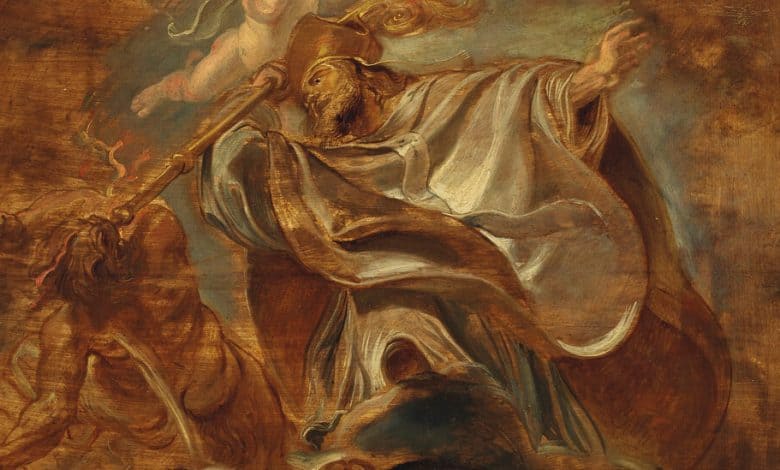A Rubens Returns to a German Castle, 80 Years After It Was Stolen

Among the most valuable art treasures once held at Friedenstein Castle, a vast baroque palace in eastern Germany, was a series of five oil sketches depicting saints by Peter Paul Rubens that disappeared at the end of World War II.
The castle had long been the home of the dukes of Saxe-Coburg and Gotha, a duchy that lost its powers, titles and much of its land after the 1918 revolution in Germany. The palace complex then became a public museum, filled with the art once owned by the ducal family and operated by an independent foundation.
But representatives of the ducal family returned to the castle in 1945 as American and Soviet forces closed in on the city of Gotha.
According to experts, truckloads of the most valuable art were removed by the family in the last weeks of the war, including three of the five Rubens oil sketches, which were later sold on the market.
One of those sketches, which depicts “St. Gregory of Nazianzus,” is now being returned to the castle and the foundation that operates it by a museum in Buffalo that bought it from a New York gallery in 1952. The Buffalo AKG Art Museum, a successor to the city’s Albright Art Gallery, did not know the work had been misappropriated and illicitly sold, and will receive compensation for the work, under a negotiated agreement, according to a statement from the parties involved in the settlement.
“I am delighted,” said Tobias Pfeifer-Helke, the director of the foundation that oversees Friedenstein Castle’s museums. “Our goal is to restore the historic integrity of the collection — especially its core works, these five Rubens sketches which belong together as a series.”
